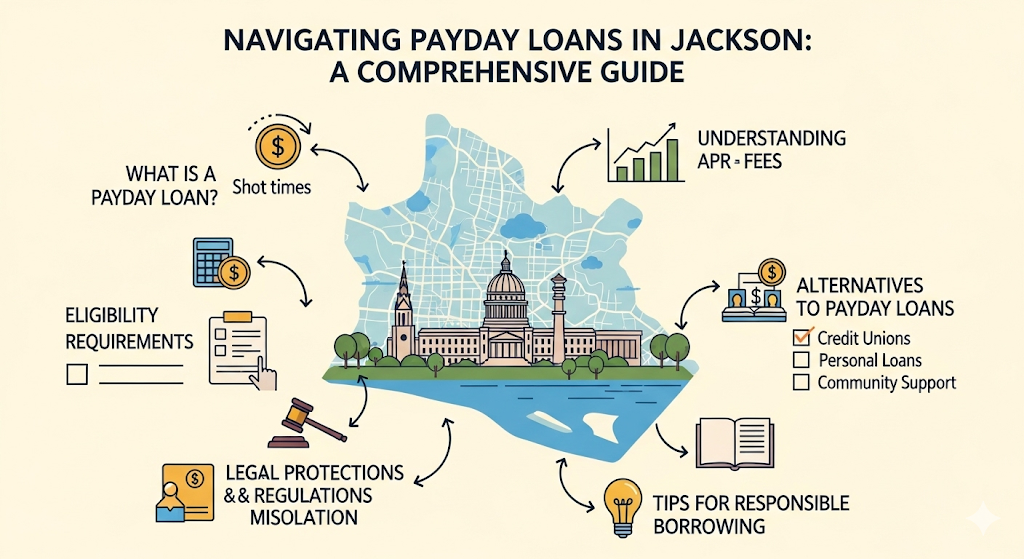
How to Add Someone to a Mortgage Loan
Adding someone to a mortgage loan essentially means that you are making them a co-borrower. This involves legally transferring some of the rights and responsibilities of the mortgage to another person. The process is not simply about adding a name to your mortgage statement; it involves legal and financial assessments to ensure that the new borrower is eligible and capable of handling the loan obligations.
What is a Co-Borrower?
A co-borrower is an individual who shares equal responsibility for repaying a loan. In the context of a mortgage, this means that both parties are equally accountable for the monthly payments and overall loan terms. This can be beneficial as it allows for shared financial responsibility, but it also means that both credit scores are affected by the loan’s performance.
Legal Implications of Co-Borrowing
When you add a co-borrower, you are not just sharing financial responsibility; you are also involving another person in a legal contract. This means both parties are legally obligated to adhere to the terms of the mortgage. Any changes or disputes will require the consent of both parties, making it vital to understand the legal implications fully.
Financial Assessments and Eligibility
Adding a co-borrower is not a simple administrative task. It requires thorough financial scrutiny to ensure that the new borrower is capable of handling the mortgage obligations. This includes assessing their creditworthiness, income stability, and overall financial health. Lenders need to ensure that the addition of a co-borrower does not increase their risk.
Why Add Someone to a Mortgage Loan?
There are several reasons why you might want to add someone to your mortgage loan:
- Shared Financial Responsibility: By adding a co-borrower, you can share the financial burden of monthly mortgage payments, potentially making it easier to manage.
- Improved Loan Terms: A co-borrower with a good credit score and financial history might help you secure better loan terms, such as a lower interest rate.
- Life Changes: Changes in your personal life, such as marriage or partnership, might necessitate adding someone to your mortgage loan to reflect your new financial situation.
Shared Financial Responsibility
Sharing the financial responsibilities of a mortgage can significantly ease the burden on a single borrower. This is especially true if the co-borrower has a steady income and is financially responsible. By splitting the monthly payments, you can free up cash flow for other expenses or savings, making your financial situation more manageable.
Improving Loan Terms
A co-borrower with a strong credit profile can potentially help in renegotiating better loan terms. This is because lenders view loans with multiple responsible parties as lower risk. As a result, you might be able to secure a lower interest rate or more favorable repayment terms, saving you money over the life of the loan.
Life Changes and Financial Alignment
Life events such as marriage, entering a domestic partnership, or even starting a business with someone can necessitate financial realignment. Adding a co-borrower can reflect these changes in your financial situation, ensuring that all parties involved are equally invested and responsible for the mortgage.
Steps to Add Someone to a Mortgage Loan

Step 1: Review Your Mortgage Agreement
Before you start the process, review your current mortgage agreement. Some lenders have specific clauses regarding changes to the loan terms, including the addition of a new borrower. Understanding these clauses is essential to avoid any potential issues.
Understanding Mortgage Clauses
Mortgage agreements often contain specific clauses that outline the conditions under which additional borrowers can be added. These might include stipulations about the creditworthiness of the new borrower or limitations on the number of times changes can be made. Familiarizing yourself with these clauses ensures you’re prepared for any lender requirements.
Identifying Lender Restrictions
Different lenders have varying policies regarding the addition of co-borrowers. Some might have stringent requirements or fees associated with the process. Identifying these restrictions early can save you time and help you avoid unnecessary complications or costs.
Assessing Your Current Financial Situation
Before proceeding, it’s wise to assess your current financial standing. Consider whether adding a co-borrower aligns with your long-term financial goals. Evaluating your budget, credit score, and debt-to-income ratio can provide a clearer picture of your readiness to make this change.
Step 2: Contact Your Lender
Reach out to your mortgage lender to discuss your intention to add someone to your loan. They will provide you with the necessary information and guide you through their specific process. It’s important to follow their guidelines closely, as each lender may have different requirements.
Initiating the Conversation
When contacting your lender, be clear and concise about your intentions. Prepare to discuss your reasons for adding a co-borrower and any relevant financial changes. Having this conversation early ensures that you understand the lender’s process and can gather any necessary information or documentation.
Gathering Lender-Specific Requirements
Each lender will have unique requirements for adding a co-borrower. These might include specific documentation, fees, or approval processes. Gathering this information upfront allows you to prepare adequately and ensures that you meet all necessary criteria.
Understanding the Timeline
Adding a co-borrower can be a time-sensitive process, especially if you’re aiming to adjust loan terms or refinance. Discuss the expected timeline with your lender to understand how long each step will take and plan accordingly to avoid any disruptions.
Step 3: Assess the New Borrower’s Financial Situation
Lenders will require the new borrower to undergo a financial assessment, which includes a credit check and verification of income and employment. Ensure that the person you are adding has a stable financial background and can meet the lender’s requirements.
Conducting a Credit Check
A credit check is an essential part of the financial assessment process. This involves reviewing the new borrower’s credit history to evaluate their reliability in repaying debts. A strong credit score can improve the chances of approval and potentially lead to better loan terms.
Verifying Income and Employment
Lenders need to ensure that the new borrower has a stable and sufficient income to contribute to the mortgage payments. This typically involves providing pay stubs, tax returns, and employment verification. Consistent income is a key factor in the lender’s decision-making process.
Evaluating Financial Stability
Beyond credit and income, it’s crucial to assess the overall financial stability of the new borrower. This includes their debt-to-income ratio, savings, and any outstanding debts or liabilities. A thorough evaluation helps ensure that the new borrower can meet their obligations without financial strain.
Step 4: Submit the Necessary Documentation
Your lender will request various documents to process the addition of a new borrower. This typically includes:
- Credit Report: A detailed report of the new borrower’s credit history.
- Income Verification: Pay stubs, tax returns, and employment verification.
- Identification: Government-issued ID and Social Security Number.
Preparing and Organizing Documents
Organizing and preparing the necessary documents ahead of time can streamline the process. Ensure that all documents are up to date and accurately reflect the new borrower’s financial situation. This includes gathering recent credit reports, income statements, and identification.
Submitting Documents to the Lender
Once all documents are prepared, submit them to your lender according to their specified process. This might involve digital uploads, mailing physical copies, or delivering them in person. Following the lender’s preferred submission method can help avoid delays.
Responding to Additional Requests
Lenders may request additional documentation or clarification during the review process. Be prepared to respond promptly to any requests for further information to keep the process moving smoothly. Quick responses can help expedite the approval process.
Step 5: Sign the New Loan Agreement
Once the lender approves the addition, both you and the new borrower will need to sign a new loan agreement. This document will outline the updated terms of your mortgage, including the responsibilities of both parties.
Reviewing the New Agreement
Carefully review the new loan agreement before signing. Ensure that all terms, including interest rates and payment schedules, align with your expectations. Take note of any changes from the original agreement and discuss any concerns with your lender.
Understanding Co-Borrower Responsibilities

The new agreement will outline the responsibilities of both borrowers. It’s crucial to understand these obligations fully, including payment deadlines, maintenance responsibilities, and any penalties for late payments. Clear understanding prevents future disputes or misunderstandings.
Finalizing the Process
Once both parties are satisfied with the terms, sign the agreement to finalize the addition of the co-borrower. Ensure that all signatures are correctly placed and that you retain a copy of the signed agreement for your records. This marks the official completion of the process.
Potential Benefits of Adding a Co-Borrower
- Increased Loan Approval Chances: If you are applying for a mortgage refinance or new loan, having a co-borrower can increase your chances of approval, especially if they have a strong credit profile.
- Shared Liability: Both parties are equally responsible for the mortgage, which can be a relief if you are experiencing financial difficulties.
- Potential for Better Terms: A co-borrower with excellent credit can potentially help you qualify for better loan terms.
Enhanced Loan Approval Chances
Adding a co-borrower can significantly enhance your loan approval chances. Lenders are more likely to approve applications with multiple financially responsible parties. This is particularly beneficial if your financial history has some blemishes, as a co-borrower’s strong credit can offset potential concerns.
Sharing Financial Obligations
Sharing the mortgage responsibility means that both parties are equally liable for the loan. This can provide peace of mind, especially during financial hardships. Knowing that the financial burden is shared can reduce stress and create a more balanced financial environment.
Access to Better Loan Terms
A co-borrower’s excellent credit can open doors to more favorable loan terms. This might include lower interest rates, reduced fees, or extended repayment periods. These benefits can lead to significant savings over the life of the loan and improve your overall financial health.
Potential Drawbacks to Consider
- Shared Liability: While sharing liability can be beneficial, it also means that both parties are equally responsible for missed payments or defaults, which can affect both credit scores.
- Legal Implications: Adding someone to your mortgage can have legal ramifications, especially in the event of a dispute or separation.
- Complexity in Future Changes: Future changes to the loan, such as refinancing or removing a co-borrower, can become more complex with multiple parties involved.
Risks of Shared Liability
While shared liability can ease financial burdens, it also poses risks. Missed payments or defaults can impact both parties’ credit scores, even if only one party is responsible. Understanding these risks is crucial before entering into a co-borrowing agreement.
Navigating Legal Complexities
Adding a co-borrower introduces legal complexities, especially in personal disputes or separations. Legal disagreements can complicate the mortgage process, making it vital to have clear agreements and possibly legal consultations to avoid future issues.
Challenges in Future Modifications
The addition of a co-borrower can complicate future mortgage modifications. Refinancing, loan restructuring, or removing a co-borrower can be more complex with multiple parties. This complexity can prolong processes and require additional approvals or legal agreements.
Legal Considerations

It’s important to understand the legal implications of adding someone to your mortgage loan. In some cases, it may be wise to consult with a legal professional to ensure that all parties understand their rights and obligations. This is especially important if the co-borrower is not a spouse or immediate family member.
Consulting with a Legal Professional
Engaging a legal professional can provide clarity on the rights and responsibilities of all parties involved. A lawyer can review your agreement and offer advice on any potential legal pitfalls, ensuring that everyone is fully informed before proceeding.
Understanding Property Rights
If the co-borrower is also being added to the property title, property rights become a critical consideration. A quitclaim deed may be required to transfer ownership rights legally. It’s essential to understand how property rights are affected and ensure proper documentation.
Tax Implications and Advice
Adding a co-borrower can alter your tax situation, particularly if they are not a spouse. Consulting a tax professional can help you understand any potential tax liabilities or benefits, ensuring that you’re prepared for any changes in your tax obligations.
Conclusion
Adding someone to a mortgage loan is a significant financial decision that can offer many benefits, such as shared financial responsibility and improved loan terms. However, it also comes with potential drawbacks and legal considerations. By understanding the process and carefully evaluating the financial and legal implications, you can make an informed decision that aligns with your financial goals and personal circumstances.
Remember, each lender may have specific requirements and processes, so always start by consulting with your lender to understand their guidelines. Taking the time to do your due diligence can help ensure a smooth transition and a successful co-borrowing experience.




